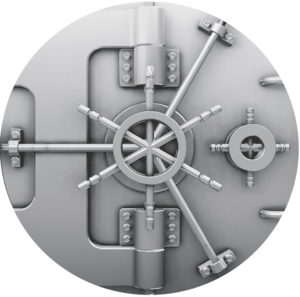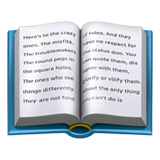No matter which stage you are at medical school, your time is being spent wisely whenever you’re at a patient’s bedside. Patient encounters are where you finally have the chance to put theory into practice.
The moment you hit the bedside is the moment you start ‘performing’ medicine – anyone who’s taken a history or performed an examination will know that it isn’t as easy as just asking a load of questions. Patient encounters are an art form that you’ll continue to practice for your entire careers.
The issues with patient interactions is that students often fail to use the learning opportunity to their full potential. I’m all for studying smarter not harder and making the most of your time. I created this blog to outline how you can make the most of your interactions with patients so you can get more from patient encounters in less time.
🥜Article in a nutshell
Here’s what we’re going to cover in this blog:
- Why patients are an invaluable source of learning
- When to be weary of engaging patients
- How to make the most of patient encounters for high-yield learning
- How to work with colleagues to enhance your learning experience
In case you didn’t know, this blog is a part of my Study Hacks series – my top tips on HOW to study at medical school to study smarter and unlock your time.
As MedEd is turning more and more digital, there are probably plenty of online resources you didn’t know about – I’ve collated all my top recommendations on WHAT to study in the MedEd Vault. Sing up below to access!
📩 Discover the internet’s best medical school resources.
Every week, I share study hacks and recommended MedEd resources to help you study medicine smarter not harder.
Forecast: 100% chance of inspo, 0% chance of spam.
👍Why patients are great for learning:
Here’s some reasons why engaging with patients is one of the cornerstone activities you should do on a daily basis when attending hospital placements.
1. It’ll improve practical exam performance – every patient encounter is an opportunity to develop communications skills and to see how theory relates to real life practice. Practice makes perfect – the more patients you see, the easier it becomes to reel off a slick history, perform a focused exam and free your mind to think about differentials and potential management.
2. Communication skills – Theres a knack to keeping a history flowing without regurgitating a checklist. Patients tell their stories outside the confines of SOCRATES, it’s up to you to keep it all on track.
3. Exam performance – you’ll have the opportunity to become more and more comfortable with exams and spot real clinical signs.
4. Presenting in hospital – ‘performing’ medicine also extends to communicating with your colleagues. Students tend to struggle most with articulating their findings – getting more presentations under your belt with be immensely valuable to you in the long run.
5. Taking initiative – patient encounters give you the chance to get out of your comfort zone. Some patients are particularly more challenging than others.
6. Putting decisions into context on ward rounds – if you know their story then you’re more likely to understand the rationale for their care.
7. This is what medicine is all about
👌When patient encounters are particularly valuable:
- They have clinical signs
- They have an uncommon presentation
- They are good historians
- You can observe the acute management of any of their problems
- When you see lots of patients with similar conditions
👎When to be weary of engaging patients
Although we have our own agendas of wanting to make the most of our time with patients, we must wholeheartedly be respectful of their time too. They have no obligation to be involved in your learning and you should be mindful of the soft (and sometimes less soft) signals that a patient may not want to engage with you as a student.
Here are some instances where you should think again about engaging a patient:
1. They look uncomfortable – This is particularly the case with those that are short of breathe (wearing an oxygen mask or nasal cannula), in pain, or delirious. Some may wish to engage with you, but be mindful that these encounters should be shorter and sharper. For example, if you notice they’re continually coughing or breathing faster – offer to hold off or end the interaction.
2. You get a bad vibe – Some patients will consent to a history or examination because they feel awkward to say no. They may even start the interaction and then later regret their decision if its taking too long. Look out for a change in facial expression, tone or mannerism that may signal they’ve had enough. If you feel a bad vibe, honour their time over yours, politely address whether they’d like to stop, or otherwise make an effort to speed up the process – there will be plenty more patients to learn from.
3. They flat out refuse – no consent = no go.
4. Its going to take a long time – Some placement sign-off activities may require you to do a full patient clerk involving a full history and multi system examination – particularly in the junior stages. There are patients who would love this. Particularly those who enjoy social interaction, are comfortable and want some company. However, there are a fair proportion who wouldn’t appreciate this. Spare the long interactions for those you feel will appreciate it. I’ve noticed that these patients are often the ones who are stable and admitted for a long stay, or those who are due to be discharged later that day and want to make the time fly by.
5. They’ve recently received any hot food or beverages – Have a look around the bedside before you engage with a patient. If they have any hot drinks or food, let them have their time to eat and drink and come back another time. You’ll find that patients can unknowingly agree to engage with you without considering these things. Your top priority should always be patient care and ensuring adequate nutrition is part of this.
6. They’re a hit with medical students – Unbeknownst to you, the patient you’re looking to engage with may have already been examined in the exact same way by a continual series of medical students – this is particularly the case if they’re in for a long stay on a ward over-populated with students. Don’t take it to heart if a patient refuses. If they’re known to have rare or important clinical findings, you may get away with being super focused. For example, you could ask to quickly listen to their chest only, if they’re known to have an ejection systolic murmur.
7. Their family and/or friends are present – Hospital admission can trigger stress and anxiety in patient’s and their families. You should grant families and friends privacy – particularly as they can only visit at certain times of the day. This is context specific though, so if you’ve got a patient who has been in for a while and you have a good rapport, they may be more than happy to see you with family present – but you shouldn’t assume this from the outset. You can also play this to your advantage if you want to take a collateral history from a poor historian. You MUST be considerate of patient confidentiality and be sure to ask the patient in private if they’re happy to discuss any aspects of their history, examination and/or care in front of their family.
⏱️How to make the most of your time with patient encounters
BEFORE:
1. Source the good historians – depending on the ward you’re on, you may find that a lot of patients are delirious or poor at giving an accurate history. To make the most of your time, you may want to track down those who will suitably respond to questioning. If you’re up for a challenge, it may be appropriate to engage those who are poor historians. If thats the case, let a clinical team member know your intentions, make sure you attend with someone else and have a low threshold for stopping the interaction.
2. Take your histories blind – A great way to put theory into practise is when you don’t know the underlying diagnosis. Although it’s tempting, don’t look at the records first. I always found it really useful to tell the patient “I want to find out about what has brought you into hospital, can you try and not give away what you’ve been told the problem is, so I can try and figure it out myself?” Otherwise you’re well on your way to having the patient tell you the working diagnosis point blank. The trick is to try and get to the problem yourself – this will be invaluable.
3. Aim to leverage your sign-offs – Leverage your interactions to get key activities signed off en masse. Can you get more than one thing signed off at once? Perhaps taking a history, then examination, then writing it up, then presenting to a supervisor may tick off 4 activities from one flurry of effort. This is much easier than seeing three separate patients. Two strategies are to sign everything off as early as possible, freeing up your time later, vs. having a minimum requirement(s) per week to keep you engaged through all of placement – I’d opt for the former.
4. Have someone ready to present to after – its a wasted opportunity to not present your patient soon after you have seen them.
DURING:
5. Always seek consent – first and foremost, you must seek approval from the patient you’re looking to engage with. Sufficient consent should cover the following:
- Greet the patient and be professional and friendly
- Tell them your name (and introduce anyone you’re with) and clearly what your role is (‘student doctor’ may be preferred over medical student – some patients may get what ‘4th year’ means, most probably won’t)
- Try to build rapport – ask how they are and if you can make them more comfortable.
Get to the point – ask them directly if they’d be willing to help with your learning and make it clear they can refuse - Be specific – “I’d/we’d like to ask you all about what has brought you in to hospital and perhaps examine you after”
- Be clear with the time commitment – “This should last around 20 minutes and we can stop at any time”
- Ask to confirm consent and remind them they can say no
AFTER:
6. Be reflective – After any interaction and away from the patient, be reflective of what went well. You can do this yourself but a much easier strategy is to have the opinion of others to help you out. See the section on working with colleagues below.
7. Find someone to present to – as per earlier – be sure to find someone to present to whilst its fresh in your mind.
8. Paint a picture in your mind of what’s going on – Now you’ve presented your patient, review the medical records and find out what they came in for. Was it what they told you? Did you miss anything out? Did the ward clerking notes miss any important information out? (e.g allergy status), Whats happening to them next? This will give you greater clarity over their healthcare journey – you’ll retain their story more as you’ve spoken to them first hand and seeing them on future ward rounds will help cement this further.
9. Offer to help with investigations – Now you’ve built a rapport with the patient and discussed their case, its useful for you to see the rest of their healthcare journey in context. Offer to help with specific investigations under supervision, such as taking bloods and be sure to look up the results when they come in.
LATER:
10. Offer to present on ward rounds – You’ll now have a great understanding of the patients history, exam findings, ongoing management plan, pending results and finalised results. This puts you in a good position to hand over at ward rounds and develop presentation skills. You’ll find this more valuable and more rewarding than hanging about on ward rounds and you’ll feel like part of the team. To take a deeper dive on making the most of ward rounds and upgrading yourself from honorary records holder, check out the blog [Shifting dullness]
11. Practise, practise, practise (but little and often) – The key here is that you should see as many patients in as many different settings over your whole time at medical school. This doesn’t mean you need to spend all day chatting to patients. Just be intentional with your time and make sure you see at least one or two per hospital visit. What matters is how this compounds over time. You can make the most of your day by concentrating intently on just a couple of interactions and leave it at that. However if you want to see more, go for it – some people prefer to milk every single day at hospital and go above and beyond over long hours. To be honest, I didn’t find this approach to be a good use of time – do whatever suits you
and your learning style.
12. Review your patients later – These patient will be engraved in your minds now. If they’re particularly note-worthy, they may stay engrained in your memory for years to come. Its good practise to come back to them after a few days and review their journey. Did any problems arise? Were any other investigations or interventions performed?
🧠Two (or more) minds are better than one
You’ll probably feel more comfortable with your colleagues at your side and it’s a fantastic way to get feedback – you can only be lean in learning when you know what to work on. It is often highly useful to approach a patient with one or more colleagues.
Here are some tips when working with others:
1. Don’t bring an army – Ideally two students together is sufficient, threes a small crowd, and anything over four is inappropriate outside the context of formal bedside teaching.
2. Have specific roles – You may find it better for one student to perform a history, and the other one to examine. Interrupting during histories is poor form. Having been on both sides, I reckon its appropriate to ask your colleague for any questions you might have missed, or anything they’d like to clarify at the intersection of going from history to examination. They’ll likely have some questions you forgot.
3. Reflect after – give constructive criticism to the other on what they should continue doing, stop doing and start doing. Be helpful, be thoughtful, be kind and be reflective. Give others feedback in the quality you’d like feedback.N.B. Make sure you’re on the same page about constructive feedback. Discuss this approach before you start giving feedback so you don’t inadvertently offend the other person – unfortunately not everyone likes feedback but its the lean way to grow – its not worth annoying anyone over it though.
🙌Conclusion
We’ve gone through the highs and lows of ward rounds and a number of ways that you can leverage your time with patients to make the most of patients interactions.
Here are the key take aways:
1 – Be intentional with your time
2 – Try to stack activites together that can be signed off by the same patient interaction
3 – Take someone with you for feedback and debrief after
4 – Aim to see just a few patients each hospital visit – the skills you delveop will compund over time.
5 – Try to go into patient interactions blind and discover the diangosis and management options yourself
Like this content, dont forget…
Check out these other blogs on being productive whilst learning at medical school: [Insert How to make the most of patient encounters] & [How to make the most of lectures] & [Ultimate guide].




